A recent article published in the European Journal of Preventative Cardiology linked one’s life expectancy with the ease and ability to rise from a seated position on the floor to a standing position. Two thousand and two patients were asked to sit on the floor and then rise to a stand. Each individual was given a score correlating to the number of supports needed to rise. For example, those putting one knee and one hand on the floor were given a “3” instead of a “5.”
Those that used two or more supports were 6.5 times more likely to die within the next five years compared with 1.8 times as likely for those that used little to no support. This study and several like it 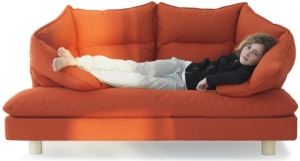 have shown that lifestyle choices that create stiffness increase our mortality rate and rob us of our quality of life. Sedentary activities such as sitting, (or binging on Netflix,) and driving are the primary causes for stiffness in the U.S.
have shown that lifestyle choices that create stiffness increase our mortality rate and rob us of our quality of life. Sedentary activities such as sitting, (or binging on Netflix,) and driving are the primary causes for stiffness in the U.S.
To avoid stiffness and guarantee a long life, it makes sense that intense cardio would be the answer. That would be inaccurate!
In a recent article by the infamous trainer, Charles Poliquin, this statement caught my attention:
“YOU SHOULD AVOID CARDIO!”
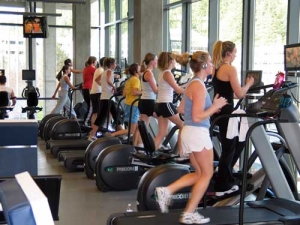 The statement that everyone should avoid cardio flies in the face of conventional wisdom. So why would one of the most well-known and respected Olympic trainers and professional athletes tell people to avoid cardio? Cardio diminishes muscle and strength gains, while increasing cardiac-harming inflammation. Endurance cardio training has been shown to increase cortisol levels, which causes a decrease in the body’s ability to repair muscle. This creates the proper environment for producing scar tissue, which leads to the alternation of the biomechanics of a joint. Altered biomechanics and a reduced ability for muscles to repair are the perfect storm for injury and reduced performance.
The statement that everyone should avoid cardio flies in the face of conventional wisdom. So why would one of the most well-known and respected Olympic trainers and professional athletes tell people to avoid cardio? Cardio diminishes muscle and strength gains, while increasing cardiac-harming inflammation. Endurance cardio training has been shown to increase cortisol levels, which causes a decrease in the body’s ability to repair muscle. This creates the proper environment for producing scar tissue, which leads to the alternation of the biomechanics of a joint. Altered biomechanics and a reduced ability for muscles to repair are the perfect storm for injury and reduced performance.
Weight training is not the answer either!
If not cardio, then weight training must be the correct exercise program for a long healthy life! Not necessarily!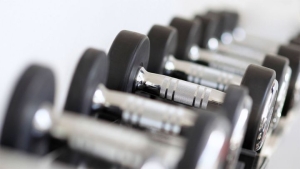
Weight training can have adverse effects on muscle length and reduce the range of motion in joints. This results in arthritis, tendon ruptures, and scar tissue that cause stiffness and lack of mobility. The harmful scar tissue created by injury and overuse is what Dr. Gil Hedley calls “Fuzz” in his YouTube video, “The Fuzz Speech.” Hedley’s “Fuzz” is a sticky, fibrous material that diminishes the sliding ability of muscles between themselves and the skin. This scar tissue is highly innervated, creating pain and discomfort when stretched or injured. Hedley explains in his video why it is important to stretch daily and be more active. “Excessive weight training, repetitive movements like running, sedentary lifestyles of adults and children coupled with inappropriate treatment of musculoskeletal injuries leads to the accumulation of Fuzz.” More fuzz means greater decrease in mobility and has been shown to shorten your lifespan.
What exercises help lengthen the lifespan?
The answer is exercises that promote flexibility and balance. Not only has flexibility been a predictor of 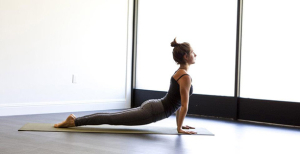 longevity, balance has been shown to be a predictor of cognitive abilities. Researched exercised like those seen in Qi gong (Chi Gong), Yoga, Pilates, and Tai Chi, have demonstrated the ability to increase flexibility and balance, resulting in many long-term health benefits. Among the elderly, reduced risk of falling is a major benefit, but so are improved memory, reduced joint pain, reduction of stress and blood pressure, and improved energy.
longevity, balance has been shown to be a predictor of cognitive abilities. Researched exercised like those seen in Qi gong (Chi Gong), Yoga, Pilates, and Tai Chi, have demonstrated the ability to increase flexibility and balance, resulting in many long-term health benefits. Among the elderly, reduced risk of falling is a major benefit, but so are improved memory, reduced joint pain, reduction of stress and blood pressure, and improved energy.
Try this Qi Gong exercise called “Good Morning.”
Here is one daily movement that can help reduce your “Fuzz” and keep your muscles subtle and flexible.
Start with your feet shoulder width apart and hands at your side.
Bend your knees to a slight squat while performing a scooping action with both arms. This would be similar to scooping water out of a bucket between your legs.
Straighten to a standing position with palms to the sky.
Now lace fingers together and stretch to the sky.
Lean to each side gently allowing for a slight stretch down the flank into hips.
Return to starting position and repeat 5 times.
Likewise, try these hip flexor stretches for low back and hip flexibility.
With one knee on the ground and one foot out and on the ground, lunge forward at the hip while keeping your back straight or slightly leaning backwards.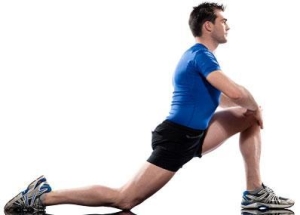
Alternative standing position:
With one foot in front of you and one foot behind (heel does not need to be on the ground, but does need to parallel the other foot.)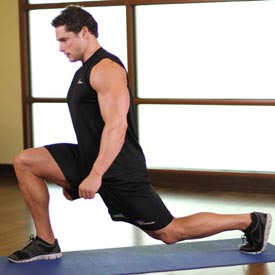
Lunge forward at the hip.
Keep your back straight and push both hands to the ceiling above your head.
For shoulder flexibility, try the Frisbee toss motion repeatedly
Besides exercises, chiropractic care can be used as a means to improve flexibility and balance as well. The chiropractic adjustment helps to fine tune the nervous system, allowing for the vestibular system and muscular system to work as a team. At
In summary, the best exercises are the ones that promote flexibility and balance in combination with chiropractic care. Balance is important, so perform cardio and weight training in moderation. Sedentary activities should be kept to a minimum as well. In addition to the recommended exercises, find time to relax and enjoy life. At [Core], we promote living life to the fullest and being as healthy as possible.
For more information or to schedule an appointment, please call our Roanoke, Virginia office at 1-540-344-1055.
Dr. Daryl Rich, DC, CSCS






